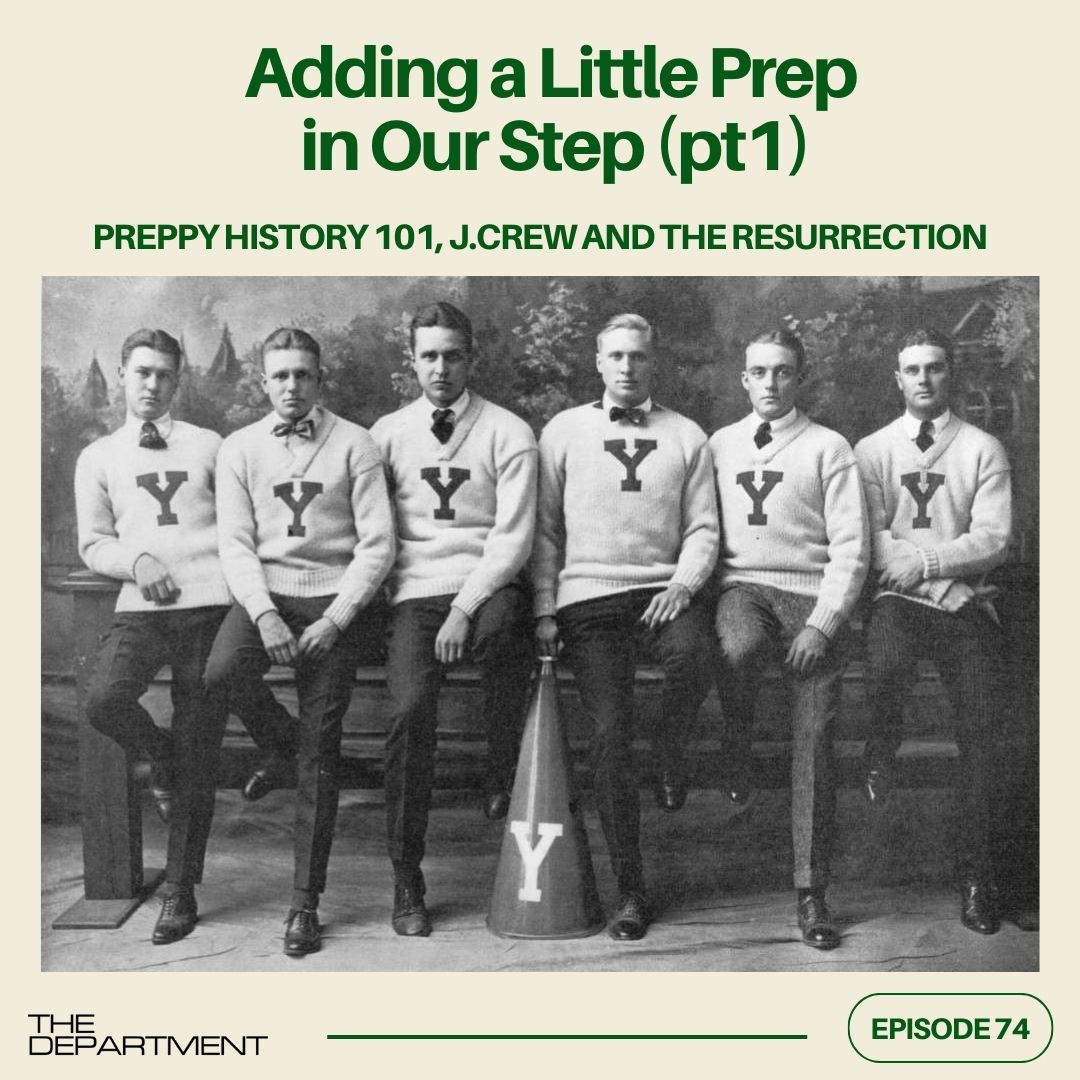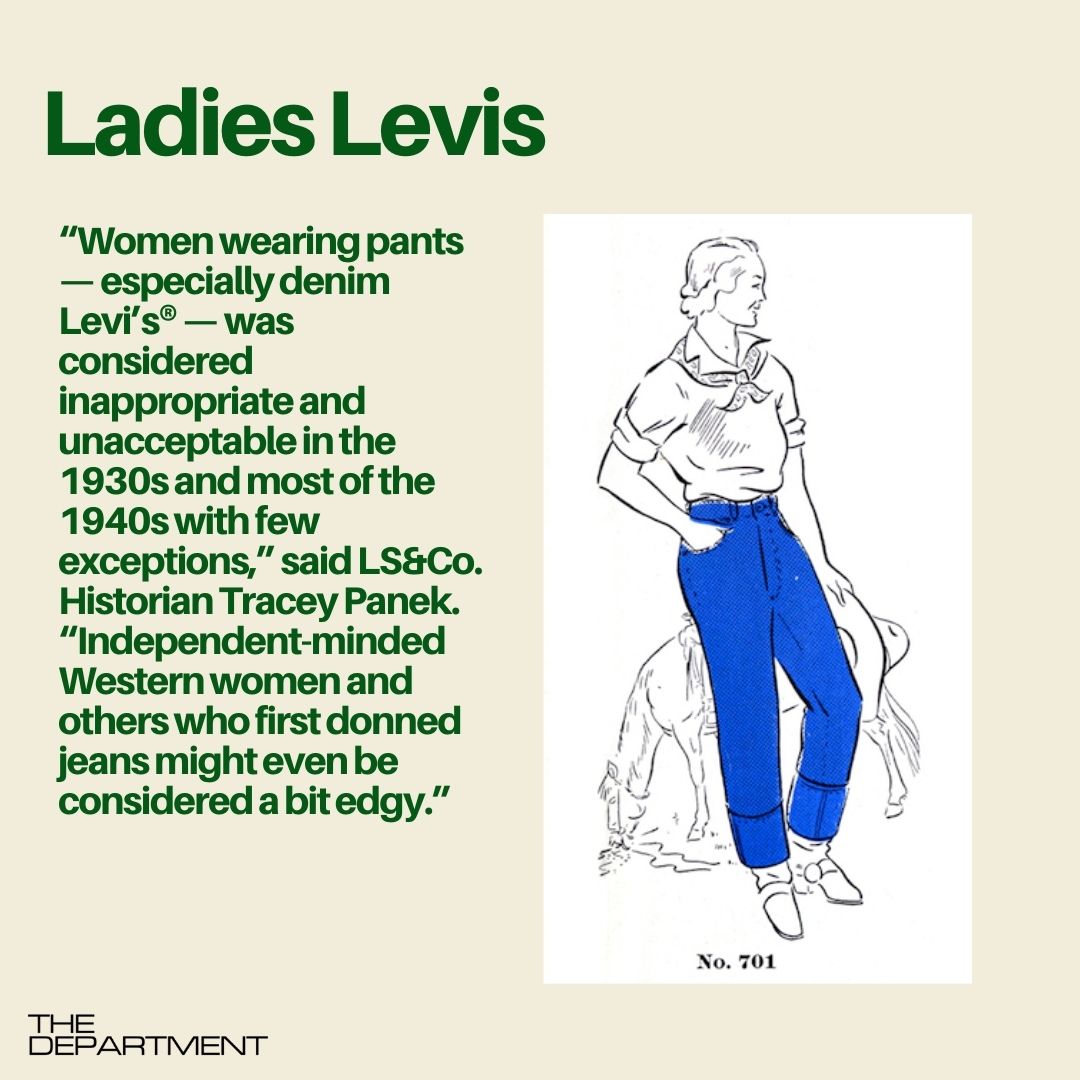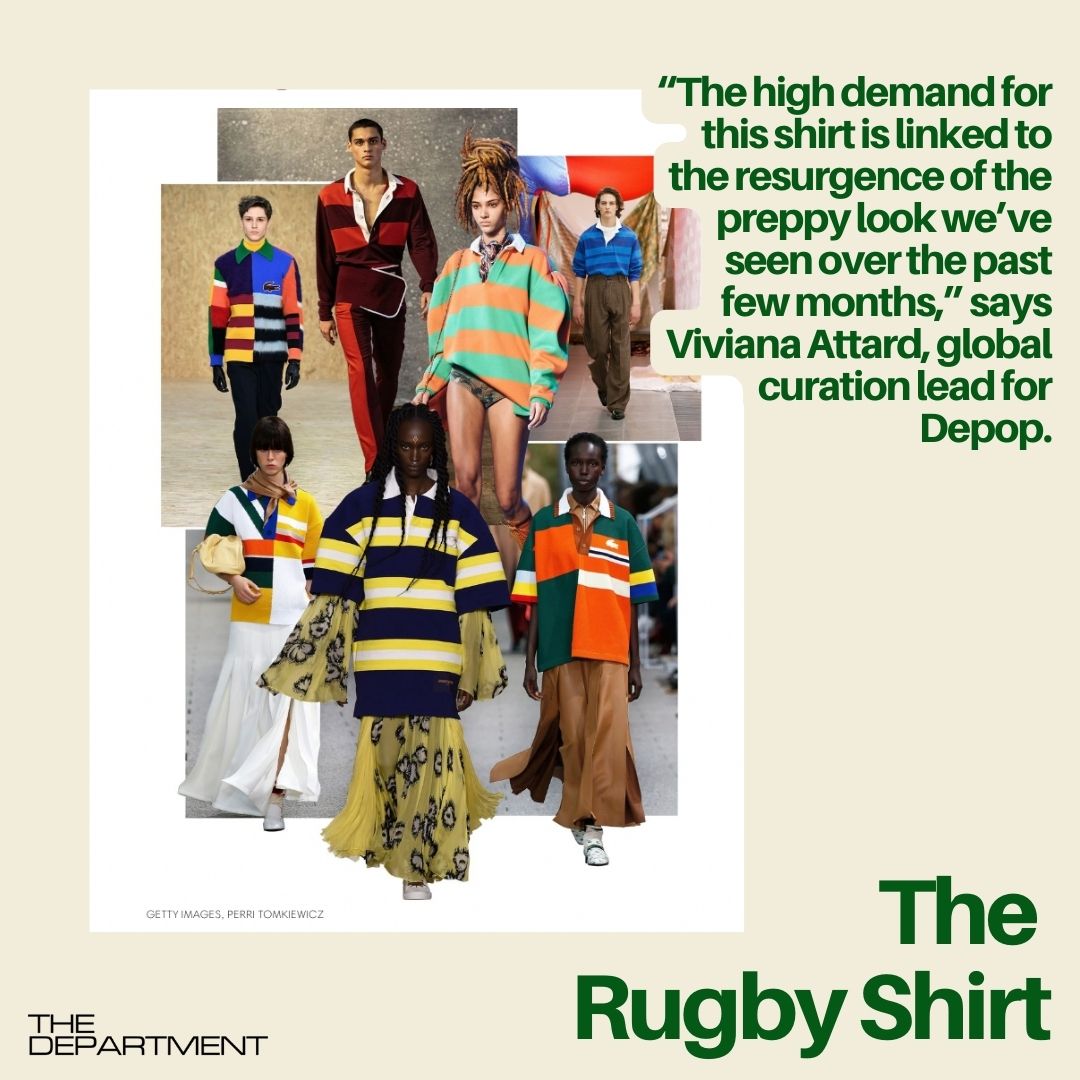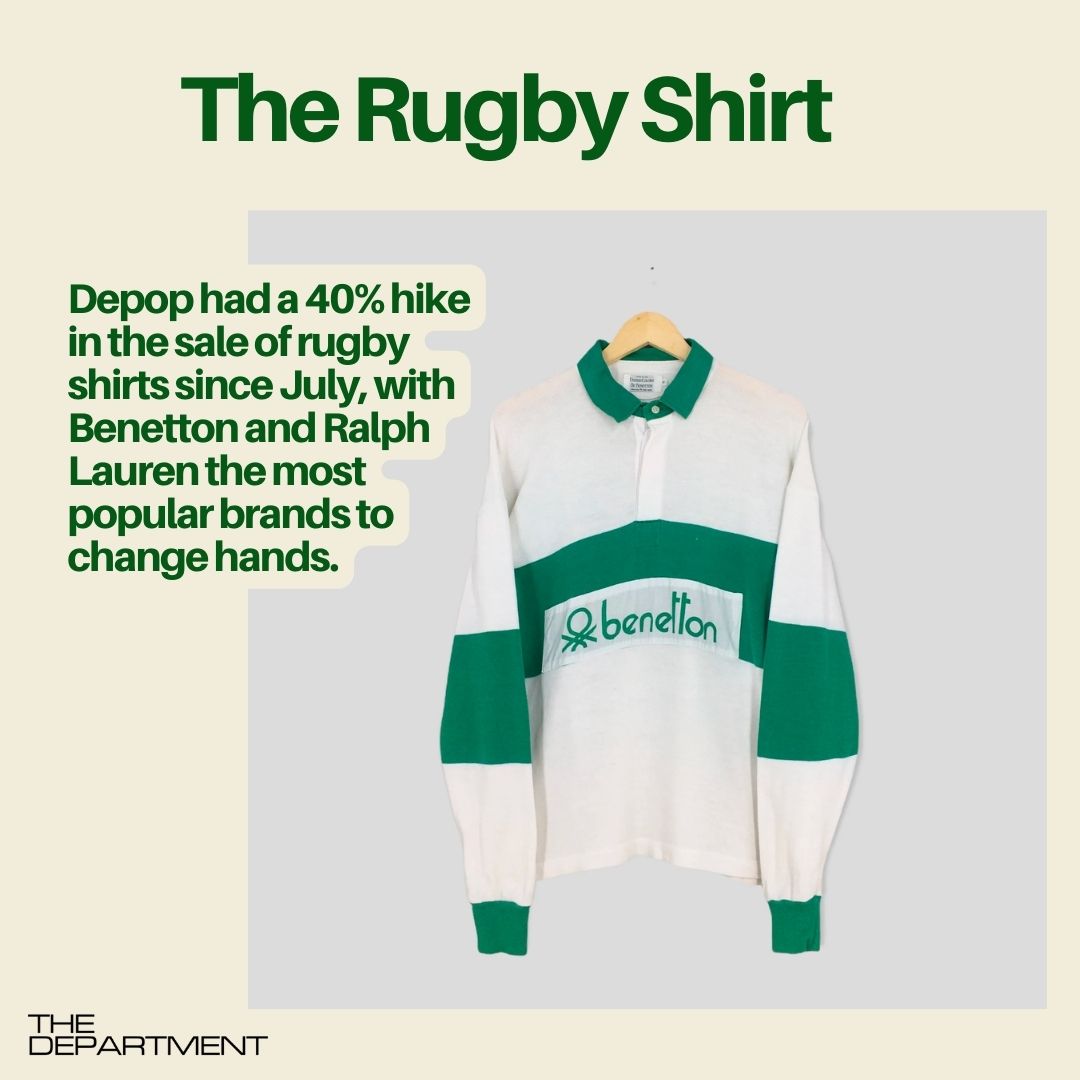︎︎︎episode 74
Adding a little Prep in our Step (Pt1): Preppy History 101, J.Crew and the Resurrection
Feb 28th, 2023
︎︎︎︎ Listen on Apple
︎︎︎︎ Listen of Spotify
︎︎︎︎ Listen on Stitcher
︎︎︎︎ Listen on Amazon

Breaking News: Prep is back in our collective step. That is right the preppy style is making a comeback after years of decline. Stay tuned this week as we take a deep dive into the history of the trend and look at what is on the horizon for this historic, and rather dicey trend!
As we mentioned at the top of this episode - In a shocking twist of events - Preppy is making a ferocious comeback. Driven by both trend and aesthetic and a highly creative, subversive mindset.
So, we have been slowly making our way back to the preppy conversation over the last few years - especially as we have witnessed different aesthetics embracing different parts of the preppy sensibility …. In 2020 and 2021 Dark Academia had nods to a romanticized ivy league attire with tweeds and chunky knits but as we have made our way into 2022 and 2023 some preppy themes have become more and more noticeable - Coastal Grandmother, Old Money, Mall Girl and even Plazacore - take cues from this renown style.
One of the most notable indicators of the trend facing a strong comeback has its stars aligned with the turnaround over at J.Crew. Now, if you don’t recall, J.Crew filed for bankruptcy in the early days of the pandemic. The nail in the coffin was the lost sales after having to close its doors during the pandemic but they had been reported plagued with a series of missteps and consumer shifts. Originally they were a darling of the industry for many many years and piggybacking not just of the preppy trend but building their own momentum by redefining it themselves back in the aughts - they were even worn consistently by former first lady Michelle Obama. But, during the aughties they began to stumble. Back in 2017 then CEO Mickey Drexler even admitted to the Wall Street Journal that their biggest mistake was to raise prices which sent the company’s sales into years long decline because they made those moves in a time when the consumer was increasingly cost-conscious….i.e. The Great Recession. So, Back in 2008 - right at the height of the great recession - the brand debuted their premium label called J.Crew Collection that offered products that were at a designer level price point like $3K Jacket and $1200 Dress. Which they eventually had to sell at 70% off. Talk about not reading the room - am I right?
Drexler admits - "We became a little too elitist in our attitude…We gave a perception of being a higher-priced company than we were — in our catalog, online, and in our general presentation. Very big mistake."
Their POV also started to lead heavily towards the fashion forward customer - and it really alienated their core consumer who started to look elsewhere for the clean, classic look that they resonated with. I will touch on this a bit later in the podcast!
They then pivoted again in 2017 to try to right size the business by lowering their prices to be more democratic and approachable which ultimately couldn’t save them.
Additionally, in true garmento fashion, Drexler also admitted that he underestimated how tech would upend the retail landscape. I mean - like - look around you? We weren't talking 2005 here - this was in the mid aughties.
In 2017 he ended up stepping down as the CEO from the struggling brand and in 2019 gave up his seat on the board of directors. Apparently in 2018 on the Black Friday weekend their website crashed losing them potentially around $775K in sales and pissing off over 300K customers and then they continued to glitch through the whole rest of the holiday season -so, you can imagine how damaging that was to the brand and their sale. It also very clearly echoes the lack of priority their digital business was given. I mean Mickey is considered a visionary in the industry - and has reportedly done incredible things (i’ve never met the guy but have worked with his contemporary at another preppy fashion house, okay house is used very liberally) - but this really speaks to the shift in the industry favoring innovation and technology over a historically outdated merchant driven strategy.
A lot of these garmentos still to this day hold power in these organizations with outdated models and lack of tech literacy - which endangers the opportunities for growth because, from my experience, they consider their experience from like the 1980s as the only reasonable reference point.
Now, in regards to the uncontrollable elements of the market - J.Crew over the years had also needed to compete with both fast fashion which was going gangbusters in the years leading up to the pandemic as well as the general and swift decline of the preppy look - which really took a toll on retaining its customer base if they weren’t totally alienated by the premium or fashion forward direction.
Since the bankruptcy the company changed hands and they turned over their C Suite team brought in to resuscitate J.Crew, giving them the tough task to put them back on the map again - So they brought on a new CEO Libby Wadle who had overseen Madewell’s epic growth, as well as new Men's Creative Director Brendon Babenzien - hailing from the mega streetwear brand Supreme and his own line Noah. Also, to target the women’s division they brought in a veteran of J.Crew, Olympia Gayot to oversee creative for Women’s and Kids. Naturally Babenzien and Gayot are influencers and considered style visionaries themselves with huge followings - so that helps with their social status and street cred.
The intention is to make J.Crew iconic again - lean back into the nostalgia of the original brand identity and embrace (shock) quality again. They have been adding more high end fabrics and dipping into the archives to breathe classic life back into this classic brand. Right in time for the resurgence of the trend - Business Insider is rather optimistic and seems like others are too. So let's see what happens this year! It does look like they are embracing resale - to be even more relevant - I wonder what Mickey would have said about that!
I did take a peek at their numbers as I am always curious about a turnaround and they are tracking slightly higher in 2022 than they did in 2021 so it is a sign in their favor that they are doing something right - and that the trend pendulum is swinging in their direction!
Now I will return to J Crew again - in the context of the history behind the trend and the demise of recent. So - I am going to - as Amanda likes to say - Put a pin in it for now and move on!
Evolution of the trend
So before we take a look at preppy (also sometimes referred to as Ivy Style) in the now and in the future let’s look back at the evolution of the trend and where it came from.
It won’t come as a surprise to anyone here that the preppy trend originally came from the 1890s and early 1900s preparatory schools, ivy league and other elite American universities that embraced more casual and sporty vibe - with a wardrobe comprised of looks appropriate for class or field as club sport pastimes were encouraged like golfing, rugby, football, sailing and tennis. This aligned perfectly with the birth of original 20th century American style like the sport coat, blazer, loafer, oxford shirt, knit sweaters and chino pants - and becoming the uniform of choice in these privileged academic circles that encouraged style as a status symbol. Brands Brooks Brothers & J. Press introduced casualwear became synonymous with the cultish style - with doors located on associated campuses and premium price points that coincided with the elite wallets. By the 1930s, college women were in on it, too. Once the first pair of denim for women were released in 1934 aka "Lady Levi's", jeans became a major piece of preppy style, and we really never looked back.




The 50s:
The 1950s was another landmark moment for the trend - as preppy was iterated on, square kids and young college men adopted the preppy aesthetic because it was aspirational and was associated with the rich and privileged elite who continued to popularize it. The movie Grease is often referenced when contextualizing at that style - with Sandy epitomizing it. Twinsets, plaid and argyle grew in popularity. As denim continued to trend an offshoot of the Preppy (aka the Ivy League style) developed a su
btrend that came to be known as Americana.
The 1950s was also a part of the origin story of modern-day sportswear evolving out of the Preppy aesthetic - and this is why the lines of preppy and Americana continue to blur to this day.




The 50s is when sports uniforms started coming in for the first time and being worn on the street as casualwear - for instance the Rugby shirt came off the field and started to be embraced by followers of the Preppy and Ivy Aesthetics as day clothes. I feel like Charlie Sheen has forever ruined my personal view of the Bowling Shirt but these bad boys were huge in the 50s following a boom in the sport in the 50s and 60s and evolved into a fashion item around that time. The 1950s was also the time when Izod - who had gotten the licensing agreement to sell and make Lacoste polo shorts, which are technically tennis shirts by way of polo games in India in the 19th century and redesigned in 1929 by French Tennis champion René Lacoste. Well after they were introduced into the US market they quickly turned them into one of the most popular types of shirts in American and Preppy Style as it was very comfortable but also tailored and was able to blur the lines between formal and leisure wear.
Not til 1972 when Ralph Lauren started to make his version of the tennis shirt and market it as a Polo Shirt - forever memorializing it as a polo agecent product again - and built a cult-like following around the brand, furthering the already popular shirt.
It is very important to note that during this time period - and prior to segregation laws - black people were going to their own ivy league universities like Morehouse and Spelman who we will return to later in this podcast…. and dressing in similar preppy and American manners. But were often written out of the scripts, with images lost through time.
There is also a new and very highly acclaimed book that was released in 2021 called Black Ivy that examines how Black civil rights leaders, jazzmen, artists and writers rewrote the sartorial codes of a largely white elite style.
The book’s hypothesis looks at the fashionable exploits of revolutionary historical black male figures in the 50s and 60s encoding a new form of preppy and Americana into their wardrobe as a way to, in theory, camouflage their radical thinking by dressing conservatively. The book’s authors most notably call out Miles Davis, Malcolm X, James Baldwin, MLK, John Coltrane and Sidney Poitier - claiming that the intentional subversion of this popular conservative and elite steyl - was being utilized as a counterculture move to be used to their own and there agenda’s benefit during a time they were fighting for racial equality and civil rights.
